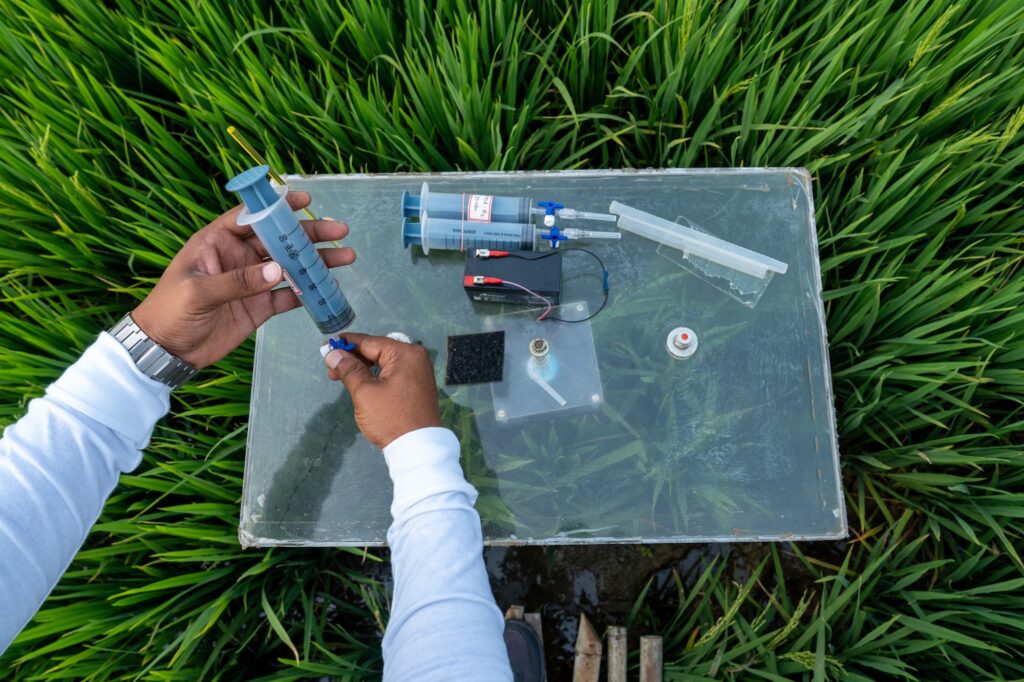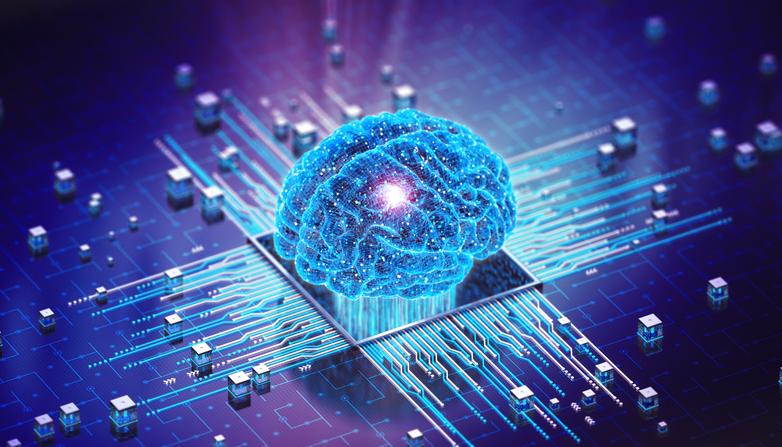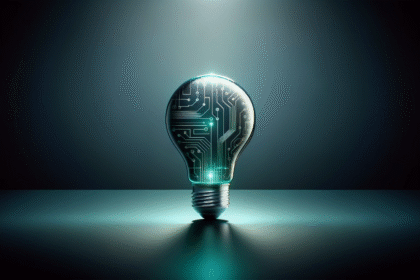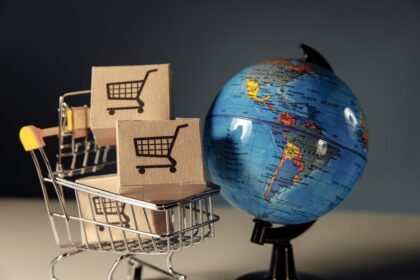Synthetic biology stands at a remarkable inflection point. What began as an esoteric field confined to academic laboratories and pharmaceutical giants is rapidly evolving toward consumer accessibility.
- Scenario 1: The Personalized Biomanufacturing Home (2028-2032)
- Scenario 2: The Synthetic Biology Gig Economy (2026-2030)
- Scenario 3: The Biologically-Enhanced Consumer Experience (2025-2028)
- Critical Enabling Infrastructure
- Addressing the Challenges
- Economic and Social Impact Projections
- Policy Recommendations
- Navigating the Transition
By 2030, the global synthetic biology market is projected to reach $85 billion, with consumer applications representing the fastest-growing segment at 25% CAGR. But what does a truly consumer-first synthetic biology ecosystem look like?
Through systematic scenario mapping, we can illuminate the transformative possibilities, and critical challenges, that lie ahead.
Scenario 1: The Personalized Biomanufacturing Home (2028-2032)
The Vision: Imagine Sarah, a working mother in suburban Denver, programming her countertop bioreactor each morning like she once programmed her coffee machine. Using standardized biological chassis and modular genetic circuits, she produces personalized medications, custom probiotics tailored to her family’s microbiome profiles, and even biodegradable household products.
Key Enabling Technologies:
- Standardized biological parts libraries with plug-and-play compatibility
- AI-driven genetic circuit design platforms accessible via smartphone apps
- Miniaturized bioreactors with automated purification systems
- Blockchain-secured biological IP and safety protocols
Market Dynamics: The home biomanufacturing sector could capture 15% of the $200 billion pharmaceutical market by enabling direct-to-consumer production of common medications and supplements. Early adopters would likely be affluent households ($100K+ income) willing to invest $3,000-5,000 in starter systems.
Regulatory Framework: This scenario requires unprecedented cooperation between FDA, EPA, and state authorities to establish “biological appliance” safety standards, similar to how kitchen appliances are regulated today but with additional biosafety protocols.
Scenario 2: The Synthetic Biology Gig Economy (2026-2030)
The Vision: Marcus, a biochemistry graduate, operates a “bio-service” business from his garage laboratory. Using democratized synthetic biology tools, he offers custom enzyme production for local breweries, produces specialty biochemicals for regional manufacturers, and even creates bespoke fragrances for boutique cosmetics companies.
Infrastructure Requirements:
- Community bio-labs with shared high-end equipment (estimated $50,000-100,000 per facility)
- Standardized quality control and testing protocols
- Digital marketplaces connecting bio-producers with consumers
- Distributed supply chains for biological feedstocks
Economic Impact: This distributed bio-economy could support 500,000+ micro-entrepreneurs globally, collectively generating $10-15 billion in economic activity while reducing dependence on centralized manufacturing.
Risk Mitigation: Digital licensing systems, mandatory insurance requirements, and real-time monitoring of biological processes would be essential to prevent misuse while maintaining accessibility.

Related: Engineering Biology Isn’t Just Health – It is the Future Of Climate Tech
Scenario 3: The Biologically-Enhanced Consumer Experience (2025-2028)
The Vision: Emma downloads a smartphone app that designs custom skincare products based on her genetic profile, environmental exposure data, and real-time skin condition monitoring. Within 48 hours, a local bio-printer produces her personalized serum using engineered yeast that synthesizes exactly the compounds her skin needs.
Technical Foundation:
- Advanced biosensing wearables providing continuous health data
- Machine learning algorithms correlating genetic variants with optimal interventions
- Distributed bio-printing networks in pharmacies and retail locations
- Real-time biological production scheduling and logistics
Consumer Adoption Pathway: Starting with high-value, low-risk applications (cosmetics, supplements), this model could expand to address the $50 billion personalized medicine market. Consumer willingness to pay premium prices (200-300% over mass-produced alternatives) for personalization creates attractive unit economics.
Critical Enabling Infrastructure
Biological Operating Systems: The consumer synthetic biology revolution requires standardized platforms, biological equivalents to iOS or Android, that abstract complexity while ensuring safety. These systems must provide:
- Standardized genetic parts libraries with verified functionality
- User-friendly interfaces for biological programming
- Automated safety checking and containment protocols
- Cloud-based simulation and design tools
Education and Literacy: Mass adoption necessitates “biological literacy” comparable to digital literacy. This requires:
- Integration of synthetic biology concepts into K-12 STEM curricula
- Community college programs training bio-technicians
- Public education campaigns addressing misconceptions and fears
- Certification programs for consumer bio-device operators
Supply Chain Transformation: Consumer synthetic biology demands new logistics networks:
- Local production of biological feedstocks and reagents
- Cold-chain distribution for living biological systems
- Standardized packaging and shipping protocols for engineered organisms
- Waste management systems for biological byproducts

Addressing the Challenges
Biosafety and Security: Consumer access to biological engineering tools raises legitimate concerns. Comprehensive solutions include:
- Hardware-level restrictions preventing dual-use applications
- AI-powered monitoring systems detecting potentially dangerous modifications
- Mandatory registration and tracking of all biological designs
- International cooperation frameworks for biological security
Ethical and Social Considerations: Democratizing synthetic biology must address equity and access concerns:
- Public funding for community bio-labs in underserved areas
- Open-source biological designs preventing monopolization
- Cultural sensitivity training for bio-entrepreneurs
- Proactive engagement with religious and cultural communities
Quality Control and Standardization: Consumer safety requires robust quality assurance:
- Automated testing protocols integrated into all production systems
- Third-party certification programs for biological products
- Insurance frameworks covering bio-product liability
- Real-time adverse event monitoring and reporting systems
Economic and Social Impact Projections
Job Creation: The consumer synthetic biology sector could generate 2-3 million jobs globally by 2035, spanning bio-technicians, bio-entrepreneurs, regulatory specialists, and support services.
Healthcare Transformation: Personalized, on-demand biological production could reduce healthcare costs by 20-30% while improving outcomes through precise targeting and reduced side effects.
Environmental Benefits: Distributed biological manufacturing could reduce transportation emissions by 40% for relevant product categories while enabling biodegradable alternatives to petroleum-based chemicals.
Policy Recommendations
Regulatory Sandboxes: Governments should establish controlled environments where consumer synthetic biology applications can be tested and refined under relaxed regulatory constraints while maintaining safety oversight.
Public-Private Partnerships: Collaboration between government agencies, academic institutions, and industry is essential to develop safety standards, educational programs, and infrastructure investments.
International Coordination: The global nature of biological threats and opportunities requires harmonized international standards and cooperative oversight mechanisms.
Navigating the Transition
The consumer-first synthetic biology future is not inevitable, it requires deliberate choices about technology development, regulatory frameworks, and social preparation. The scenarios outlined here represent plausible pathways, but the ultimate outcome will depend on our collective ability to balance innovation with responsibility, access with safety, and individual empowerment with community protection.
Success requires recognizing that synthetic biology for the masses is not merely a technological challenge but a sociotechnical transformation requiring new institutions, new literacies, and new forms of cooperation.
By beginning this conversation now, involving diverse stakeholders from technologists to ethicists to community representatives, we can shape a future where the transformative power of biological engineering serves broad human flourishing rather than narrow interests.
The next decade will determine whether synthetic biology becomes another technology that widens inequality or one that democratizes innovation and empowers communities. The scenarios we choose to pursue today will define the biological reality of tomorrow.






